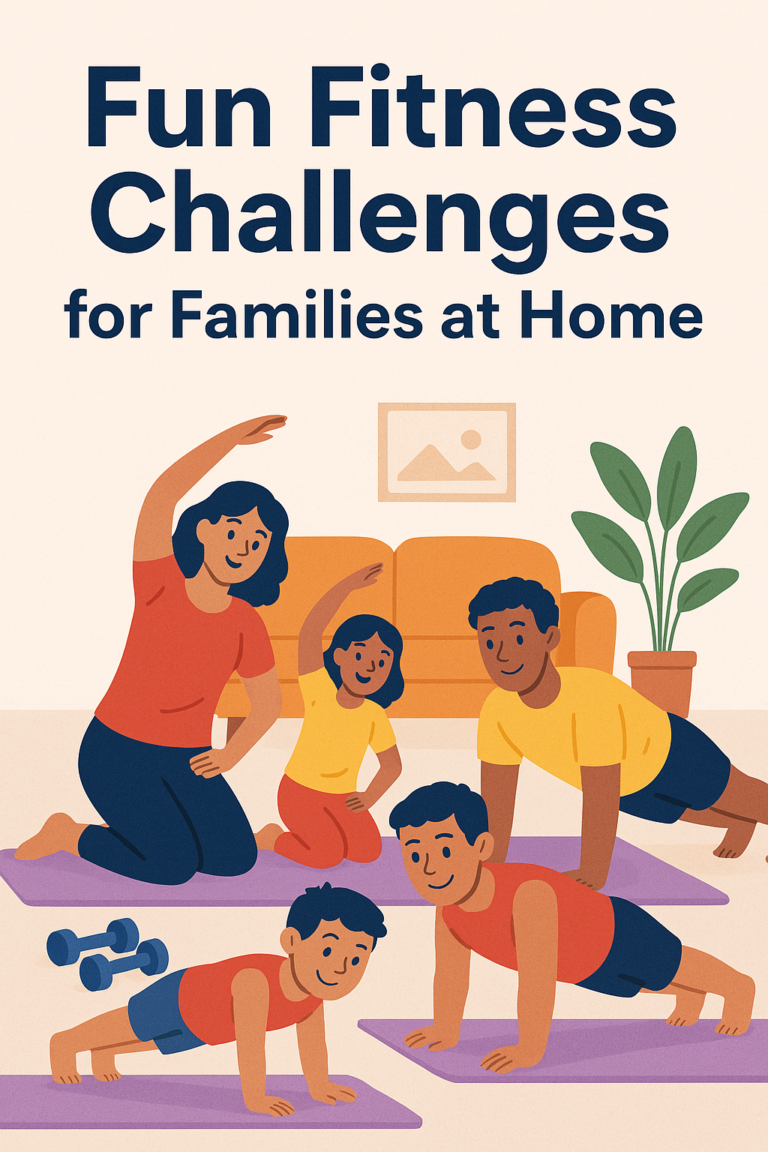Traveling with kids can sometimes feel like a juggling act, but it doesn’t have to be!
With the right family travel itinerary, you can create fun experiences that everyone will remember.
In this article, we’ll share 12 amazing family travel itineraries that make traveling with children a breeze.
From exciting beach destinations to charming mountain retreats, there’s something for every family’s taste. Get ready for a wonderful adventure with your little ones!
1. Beach Bliss in Hawaii

Hawaii is an idyllic destination for families seeking a perfect blend of adventure and relaxation.
With its golden sandy beaches and crystal-clear waters, it’s a paradise for kids of all ages. Start your family vacation with an exhilarating surf lesson at Waikiki Beach—it’s an experience even the little ones can enjoy! After catching some waves, head over to the breathtaking Hanauma Bay, where you can snorkel and discover vibrant marine life. Don’t forget to bring along some quality snorkeling gear to make the most of this underwater adventure.
For a scenic experience, take a drive along the North Shore to witness the legendary big waves and perhaps catch a glimpse of some turtles. As the sun sets, immerse yourself in Hawaiian culture by attending a traditional luau, where your children can join in on hula dancing and enjoy a feast of delicious Hawaiian cuisine.
To ensure a smooth trip, remember to pack plenty of sunscreen for kids and stay hydrated. Also, consider bringing along some beach toys to keep the little ones entertained while relaxing on the shore.
With so many family-friendly options available, Hawaii makes it easy to create unforgettable memories together.
2. Adventure in the Smoky Mountains

The Smoky Mountains are an absolute gem for adventurous families seeking outdoor fun!
Picture yourself hiking through vibrant forests, spotting playful wildlife, and inhaling the refreshing mountain air. To kick off your adventure, start at Cades Cove, a stunning valley where you can catch glimpses of deer and perhaps even a black bear. With easy hiking trails designed for kids, it’s the perfect spot to explore together. Make sure to equip your little ones with kid-friendly hiking boots to keep their feet comfortable on the trails.
For an unforgettable experience, don’t miss tubing down the Little River, where the sound of laughter and splashes will echo around you. As the sun sets, gather around a cozy campfire to share stories and indulge in delicious s’mores! To enhance your family camping experience, consider investing in some reliable camping gear that will make your stay enjoyable.
Remember these family-friendly tips: bring a camera to capture those precious moments, plan for some downtime as kids will need breaks, and consider renting a cabin for a cozy getaway. With a variety of outdoor activities, the Smokies promise to keep everyone entertained and engaged throughout your adventure! Don’t forget to pack your hiking gear in a sturdy hiking backpack to ensure you have everything you need for a fantastic trip.
3. Magical Days at Disney World

Disney World is the ultimate destination for families, where dreams truly come to life! With exhilarating rides, enchanting character encounters, and magical parades, there’s something to delight every member of the family.
To make the most of your experience, plan your visit around your children’s favorite characters—whether it’s a meet-and-greet with Mickey Mouse or an enchanting encounter with princesses. Remember to take frequent breaks, as the excitement can be quite overwhelming for little ones. A character dining experience can add a special touch to your meals, allowing you to enjoy delicious food while your kids interact with beloved characters.
As night falls, don’t miss the breathtaking fireworks show that illuminates the sky above Cinderella’s Castle—it’s a magical end to a perfect day. To ensure a smooth visit, consider purchasing Disney park tickets in advance to avoid long lines.
Additionally, having a portable phone charger on hand will keep your devices powered, so you can easily check wait times and make dining reservations using the Disney app. Arriving early will help you beat the crowds, and using a stroller for younger kids will keep them comfortable as you explore the magic of Disney World, creating unforgettable family memories filled with laughter and joy!
4. Exploring National Parks

Visiting national parks offers families an incredible opportunity to bond with nature while creating lasting memories.
From the breathtaking vistas of the Grand Canyon to the geothermal wonders of Yellowstone, each park presents unique adventures for families to enjoy together. Kids will be thrilled by hiking the trails, spotting wildlife, and engaging in educational experiences, especially through the parks’ Junior Ranger programs that make learning both fun and interactive.
Don’t forget to pack a delightful picnic to enjoy amidst stunning landscapes, allowing your little ones to explore safely under your watchful eye. To enhance your experience, consider equipping your kids with binoculars for kids for exciting wildlife spotting, and make sure you have the right hiking gear to keep everyone comfortable on your adventures.
Additionally, a good park guidebook can help you plan your day and uncover hidden gems within the parks.
National parks are ideal for adventurous families looking to blend fun with education, ensuring that every trip is both enriching and memorable.
5. Fun at the Beach in Florida

Florida’s beaches are renowned for their soft sands and a plethora of family-friendly activities that make them perfect for a day of fun.
Imagine spending your days building intricate sandcastles with a sandcastle kit, splashing in the gentle waves, and collecting colorful seashells along the shore. Clearwater Beach is a must-visit destination, where the shallow waters are ideal for little ones to safely enjoy. For a bit of added adventure, consider renting paddleboards or kayaks to explore the beautiful coastline together!
As the sun sets, take advantage of the vibrant atmosphere by participating in local events like beach bonfires or music festivals.
To ensure a successful beach trip, remember to bring plenty of water and snacks to stay hydrated, and don’t forget to pack beach umbrellas for shade and comfort. And of course, sunscreen is a must for everyone to protect against those strong sun rays!
With all these elements in place, Florida’s beaches offer a fun and relaxing atmosphere for families to unwind and create lasting memories together. Don’t forget to equip your kids with the right swim gear to keep them comfortable and safe while they play!
6. City Adventures in San Francisco

San Francisco is a treasure trove of family-friendly activities that will engage both kids and adults.
Begin your adventure at the iconic Golden Gate Bridge, where you can walk or bike across for breathtaking views of the bay. To enhance your experience, consider picking up a comprehensive San Francisco city guidebook to help navigate the city’s many attractions.
Don’t forget to visit the Exploratorium, a hands-on science museum that promises to keep kids entertained for hours. A ride on the famous cable cars is another must-do; you can easily purchase cable car tickets online for a hassle-free experience.
As the day winds down, take a leisurely stroll through Fisherman’s Wharf and indulge in delicious clam chowder served in sourdough bread bowls.
For a seamless trip, remember to dress in layers due to the city’s unpredictable weather, utilize public transport for convenience, and plan your itinerary around kid-friendly attractions. Lastly, encourage your children to document their adventures by giving them travel journals to jot down their favorite moments.
San Francisco truly offers a delightful blend of culture, fun, and unforgettable experiences for families.
7. Cultural Journey in Washington, D.C.

Washington, D.C. is a vibrant hub of history and culture, making it an ideal destination for families looking to explore and learn together.
Start your adventure at the National Mall, where you can marvel at iconic monuments and memorials. Don’t miss the opportunity to visit the Smithsonian museums, which offer free admission and engaging exhibits suitable for visitors of all ages. To enhance your experience, consider purchasing D.C. museum passes that allow for easier access and potentially special exhibits.
Another highlight is the National Zoo, where children can discover fascinating animals from around the globe. To keep the whole family comfortable while exploring, make sure everyone wears comfortable walking shoes to ensure a pleasant experience.
As the sun sets, consider joining a guided night tour of the monuments, allowing you to appreciate their stunning beauty illuminated against the night sky.
For a deeper understanding of the city’s rich history, pick up some history books for kids to spark your children’s interest in the stories behind each landmark.
Remember to download apps for museum information and schedules, use the Metro for convenient transportation, and schedule some downtime to keep the kids from feeling overwhelmed. D.C. is a treasure trove of knowledge and fun, promising unforgettable memories for families.
8. Game-Changing: Travel with a Flexible Itinerary

One of the most effective strategies for making family travel smoother is to embrace a flexible itinerary.
While having a plan is beneficial, allowing for spontaneity can lead to some of the most memorable experiences. Instead of adhering strictly to a timetable, leave some room for adjustments based on your children’s moods or serendipitous discoveries. If you stumble upon a delightful playground or a lively local festival, don’t hesitate to dive in and enjoy!
To enhance your travel experience, consider packing a travel journal to document your adventures and capture those unplanned moments. You can find great options like these travel journals that make it easy for kids to jot down their thoughts.
Additionally, include some portable games for kids in your travel bag to keep everyone entertained during downtime or unexpected delays. Check out these fun portable games that are perfect for on-the-go fun.
Lastly, organizing your packing with flexible packing cubes can help you stay clutter-free and make it easier to adapt your plans as needed.
This approach not only makes your family trip more enjoyable but also reduces stress, ensuring that everyone can have a fantastic time together.
9. Enchanting Experiences in New Orleans

New Orleans is a lively city brimming with rich culture, captivating music, and mouthwatering cuisine, making it an exceptional destination for family travel. Start your adventure in the iconic French Quarter, where children can delight in street performances and savor delicious beignets. To add an unforgettable touch to your trip, consider picking up a comprehensive New Orleans travel guide that offers insights into the city’s hidden gems.
For a unique experience, take a steamboat cruise along the majestic Mississippi River, providing a fun and scenic way to explore the city. Don’t forget to visit the Audubon Aquarium of the Americas, where kids can be mesmerized by the enchanting marine life on display. To wrap up your day, enjoy live jazz music that will keep the entire family entertained and immersed in the city’s vibrant atmosphere.
When traveling with kids, remember these tips: plan your activities around kid-friendly times, sample the local cuisine while also having familiar options for picky eaters, and keep cash on hand for street performers or local vendors. You might even want to create a family music experience with local music playlists that capture the essence of New Orleans. This dynamic city offers a rich tapestry of experiences that will ignite your family’s sense of adventure and create lasting memories. If you’re inspired to bring some New Orleans flavor home, consider exploring kid-friendly cookbooks that will let you recreate the delicious tastes of your travels.
10. Scenic Road Trip Along the California Coast

A scenic road trip along the breathtaking California coast promises an unforgettable adventure for families.
Beginning in the iconic city of San Francisco, you can make your way down to Los Angeles while soaking in stunning vistas at various viewpoints along the route. Make a stop in the charming town of Monterey to visit the famous aquarium, where your kids will delight in spotting sea otters and sharks!
Be sure to add a visit to Hearst Castle to your itinerary for a peek into history and a stroll through its beautiful gardens.
To keep the journey enjoyable for everyone, consider bringing along some road trip games to keep the kids entertained during the drive. Stock up on travel-sized snacks to satisfy those hunger pangs along the way. Additionally, using car organizers can help keep your space tidy and ensure easy access to everything you need.
This road trip is not just about reaching your destination; it’s an opportunity for bonding and making lasting memories as a family!
11. Wildlife Safari in South Africa

Take your family on an exhilarating wildlife safari in South Africa for an unforgettable adventure!
Kick off your journey in Kruger National Park, where you can witness the awe-inspiring Big Five—elephants, lions, leopards, rhinoceroses, and buffalo—up close in their natural environment. Kids will be captivated by the sight of majestic giraffes and playful elephants roaming freely. Many lodges provide family-friendly safari experiences, complete with educational programs designed to engage young explorers.
As the sun sets, gather the family for stargazing under the vast African sky, creating magical memories that will last a lifetime. To enhance your safari experience, don’t forget to pack binoculars for kids to help spot wildlife from a distance, and consider bringing along wildlife field guidebooks to learn more about the animals you encounter.
To keep the adventure safe and enjoyable, discuss safari rules with your children before embarking on your journey. A family safari is not just a vacation; it’s a thrilling adventure that can inspire a lifelong love for nature in your kids. If you’re looking for travel packages, check out travel safaris that cater to families for an even smoother experience!
12. Relaxing Retreat in Costa Rica

Costa Rica is a true family paradise, celebrated for its breathtaking beaches and vibrant rainforests.
During your stay, immerse yourselves in the stunning natural beauty, exploring everything from majestic waterfalls to diverse wildlife.
A visit to Manuel Antonio National Park is a must, where your kids can delight in spotting sloths, playful monkeys, and an array of colorful birds.
After a day of exploration, unwind on the pristine beaches, perfect for family activities like snorkeling. Make sure to bring along your own snorkeling gear for an unforgettable underwater experience.
Don’t forget to pack beach towels for those sunny days spent by the sea!
In the evenings, gather the family for a fun cooking class where you can learn about local cuisine together. To help you navigate your adventure, consider picking up a travel guide for Costa Rica here.
Remember these tips for enjoying your time in Costa Rica with kids: choose activities based on their interests, prioritize safety while exploring nature, and always pack insect repellent and sunscreen.
With endless adventures waiting, Costa Rica is sure to create cherished memories for your family!
Conclusion

Traveling with kids can be an amazing adventure filled with laughter and joy.
With the right family travel itinerary, you can explore new places while creating unforgettable memories together.
These 12 itineraries are just the beginning of what family travel can be. Embrace the journey, enjoy the moments, and remember: it’s not just about the destination, but the experiences you share as a family.
Note: We aim to provide accurate product links, but some may occasionally expire or become unavailable. If this happens, please search directly on Amazon for the product or a suitable alternative.
This post contains Amazon affiliate links, meaning I may earn a small commission if you purchase through my links, at no extra cost to you.















































































































